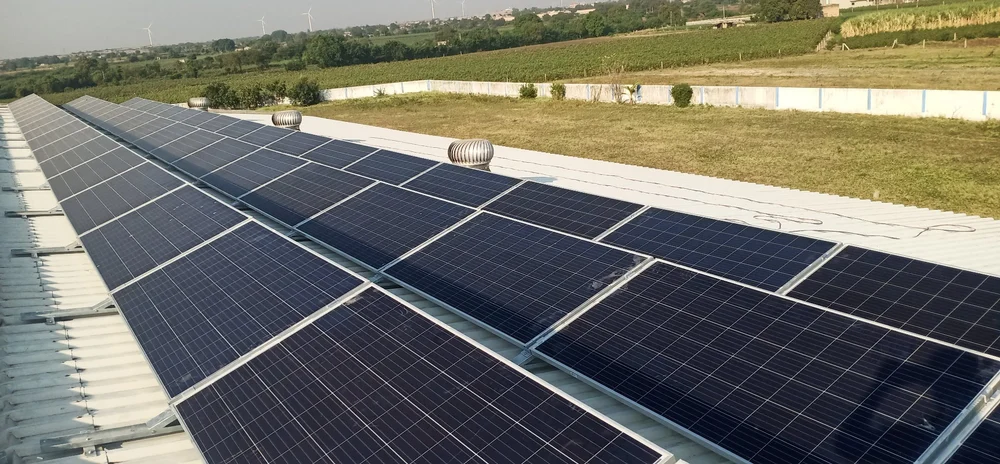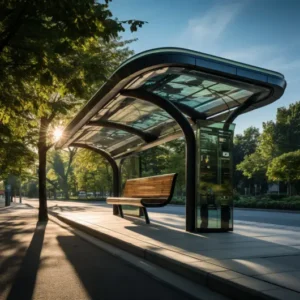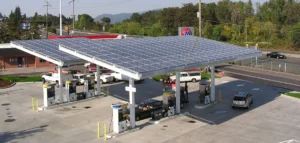
Harnessing solar energy has become a key solution in our quest for renewable energy sources. However, the efficiency and safety of solar power systems heavily rely on their foundation – the solar mounting structures. These structures not only support the weight of solar panels but also face environmental challenges head-on. Understanding the different types of solar mounting structures, their strengths, weight capacities, and ideal installation locations can significantly impact the success and sustainability of your solar investment.
Rooftop Solar Structures: Maximizing Residential Efficiency
Why Choose Rooftop?
Rooftop solar structures are perfect for residential areas where space is at a premium. They allow homeowners to make the most of unused roof space to generate electricity, reduce utility bills, and increase property value.
Strength and Capacity
Rooftop structures are designed to be as non-intrusive as possible. Using materials like hot-dipped galvanized iron, these structures can withstand harsh weather conditions, including heavy rain and wind speeds, ensuring a long lifespan of over 25 years. They are engineered to support the weight of solar panels, which typically weigh around 20 kg each, plus additional loads from snow and maintenance activities.
Ideal Installation Scenarios
The best rooftops for solar installations are those with little to no shading, facing south (in the Northern Hemisphere) to maximize sunlight exposure. Flat and angled roofs can both be fitted with solar panels, but the installation method and structure type will vary accordingly.
Industrial Rooftop Solar: Empowering Businesses
Why Choose Industrial Rooftop?
For businesses with large, unused roof spaces, industrial rooftop solar installations can significantly reduce operating costs and carbon footprints. They are ideal for warehouses, factories, and large commercial buildings.
Strength and Capacity
Industrial rooftop structures are tailored to the specific needs of the building, with profiles like monorail and standing seam designed to distribute the weight evenly across the roof. These structures can generally support the same weight per panel as residential setups but are scalable to accommodate hundreds or even thousands of panels.
Ideal Installation Scenarios
Large, flat roofs or those with a gentle slope are perfect for industrial solar installations. Roofs made of metal, composite, or membrane materials are typically strong enough to support these systems, especially when designed with minimal penetrations to preserve roof integrity.
Ground-Mounted Solar: The Commercial Powerhouse
Why Choose Ground-Mounted?
Ground-mounted systems are the go-to for commercial projects or residential setups where roof space is inadequate or unsuitable. They offer the flexibility of placement for optimal sun exposure and ease of maintenance.
Strength and Capacity
Constructed from materials like steel and aluminum, ground-mounted structures are incredibly robust, capable of enduring extreme weather while supporting thousands of kilograms of weight. These systems can be anchored deeply into the ground to withstand high winds, with the capacity to support larger, more efficient panels that residential roofs might not accommodate.
Ideal Installation Scenarios
Open fields or unused land with direct sunlight exposure are ideal for ground-mounted solar systems. These locations allow for the panels to be oriented perfectly towards the sun, without the limitations of roof angles or surrounding structures.
Choosing the Right Structure
Selecting the appropriate solar mounting structure involves considering several factors:
- Location and Space Availability: Rooftop structures are ideal for limited spaces, while ground-mounted systems require ample land.
- Structural Strength and Weight Capacity: Ensure the chosen structure can support the weight of your panels, plus additional environmental loads.
- Sunlight Exposure: Optimal placement is crucial for maximizing energy production. Rooftops should have minimal shading, while ground-mounted systems offer more flexibility in orientation.
- Longevity: Material quality and design influence the lifespan of your solar mounting structure. Opt for corrosion-resistant materials and designs that account for local weather conditions.
Conclusion
The foundation of a successful solar power system lies in selecting the right mounting structure. By understanding the unique benefits, capacities, and ideal scenarios for rooftop and ground-mounted solar structures, you can make an informed decision that ensures the longevity, efficiency, and sustainability of your solar investment. Tailoring your choice to your specific needs and environmental conditions will maximize your solar energy production, contributing to a greener planet and a brighter future.



